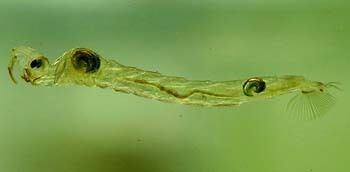Subphylum Hexapoda | ||
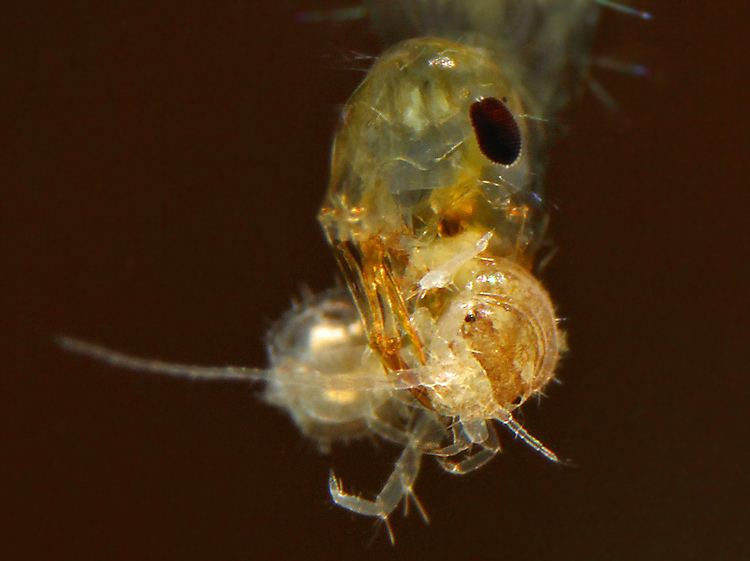 | ||
Family ChaoboridaeDe Haan, 1849 Representative species Chaoborus crystallinus, Chaoborus obscuripes, Chaoborus flavicans, Chaoborus punctipennis, Chaoborus trivittata | ||
Chaoborus punctipennis glassworm or phantom midge larvae
A glassworm is a type of larva of a midge genus called Chaoborus. They are also known as phantom midge larvae, because they are transparent. They can be found commonly in lakes all over the world and can be up to 2 centimeters in length.
Contents
- Chaoborus punctipennis glassworm or phantom midge larvae
- Hunt for the glassworm chaoborus nyblaei
- Life cycle
- References
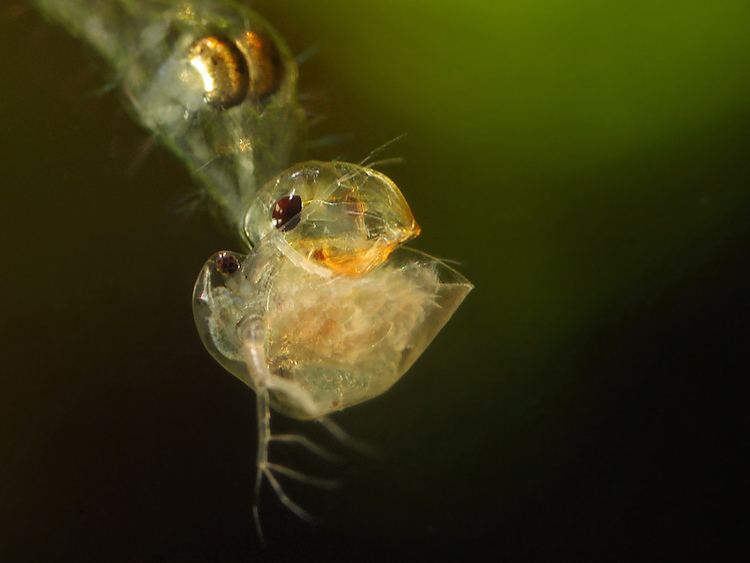
Glassworms are almost entirely transparent, except for pairs of black kidney-shaped structures in the front and the back of the body. These dots are the air sacs. They use these air sacs to migrate up and down in lakes. Glassworms breathe through the end of their abdomen and have two small eyes at the front of their bodies.
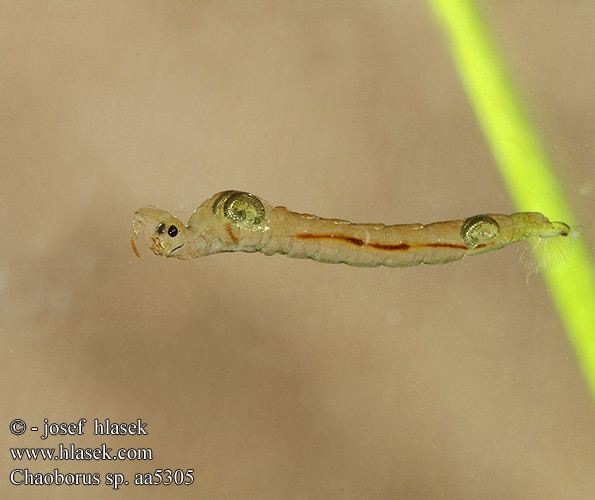
Chaoborus adults do not bite or suck blood. Larvae live in open waters and even sediments, where there is no oxygen for them to breathe. In some lakes they can be found as deep as 70 m. In these deep anoxic waters they can avoid predation more easily than near the surface. They get around the fact that a normal air filled invertebrate tracheal system would fail at these depths by having it reduced to just two air sacs. They are predaceous, and catch their prey with their modified prehensile antennae. They look somewhat like mosquito larvae, on which they prey and frequently destroy in large numbers. Chaoborus are considered opportunistic eaters, as their main diet consists of copepods and cladocerans, though they are believed to prefer copepods. However, they tend to select whatever prey enters its strike zone as it is not known for chasing prey. Prey selection also varies between species as head and mandible size dictate maximum prey size.
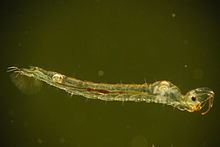
Their main predator is fish, which can cause a behavioral response due to light factors influenced by their presence. This fish factor causes an increase in the average depth the individuals can be found at. This vertical migration behavior is believed to be a chemical reaction, rather than a visual or mechanical.

The simplest way to collect glassworms is by a plankton net. They can be found in almost all water, but most abound in fish-free quarry ponds during winter. Glassworms are very easy to store if the water is kept cold and aerated. They are very tolerant to bad water conditions, including chlorine. They are sometimes collected and sold as fish food. To capture large amounts of glassworms use an outboard motor for boats. Drill two holes opposite to each other in the lake ice, where the engine is put in one and a large net are put in the opposite hole. By putting spin on the water in the lake can you capture large quantities of galassworms. Do not do it without first talking with the landowner and authority if there is appropriate and legal. make sure the ice is strong enough for you and your equipment , use appropriate safety equipment for ice fishing. All fishing on the ice is at your own risk.

Hunt for the glassworm chaoborus nyblaei
Life cycle

Chaoborus spends the majority of its life in the larval stage. In this larval stage, there are 4 growth in-stars before reaching adulthood. Most Chaoborus species are univoltine, or live for only one year, though some populations have been recorded as having a two year generation time. Timing of pupation depends on local environmental conditions, though generally occurs after any ice has thawed and temperatures in the water begin to rise again.
